February 2013 archives
you are here [x]: Scarlet Star Studios > the Scarlet Letters > February 2013
<< before
January 2013
after >>
May 2013
February 14, 2013
ottawa international animation festival 2012 - review
by sven at 11:05 am
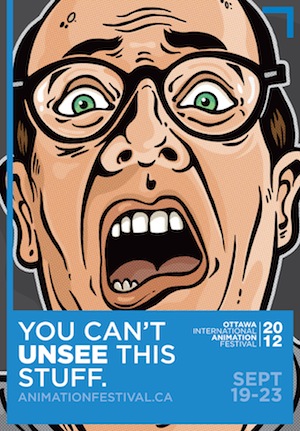
Last year I had the pleasure of attending the 2012 Ottawa International Animation Festival (Sept 19-23). After a good deal of thought, I've decided that too much took place to tell the story chronologically. Instead, I'll organize my review geographically — giving a guided tour of the locations I visited. Being a festival director myself, I'll also be peppering in observations about event management.
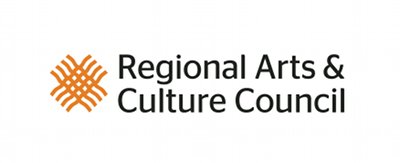
But first: THANK YOU to the Regional Arts & Culture Council! This trip was funded in part by a Professional Development grant. I'm very grateful for the opportunity, and hope that what I've learned from this trip will help me to give back to the Portland community in the form of higher quality arts events.
I. GETTING TO OTTAWA
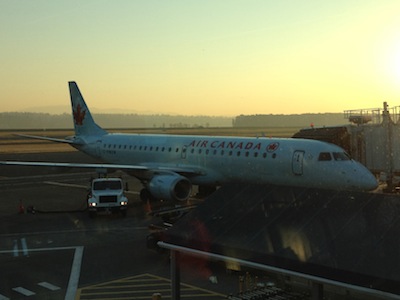
I flew to Ottawa by way of Toronto. The Toronto airport was mammoth in scale and labyrinthine. I really half-expected to meet a minotaur in there. On the way back, I went via Vancouver, which much more laid-back.
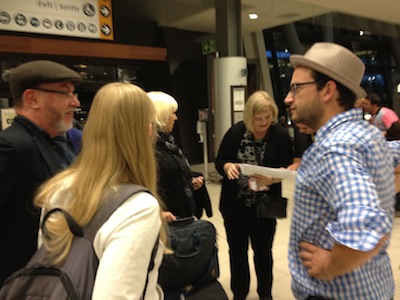
Immediately upon arriving in Ottawa I discovered an OIAF table. The festival's artistic director, Chris Robinson, was waiting there to meet incoming film jurors. What a stroke of luck! Before almost anyone else had arrived, I got to ask Chris some questions about his role with the fest. Then Barry Purves arrived. He was to be one of the Feature Film Jurors... He's a master stopmo animator who's written a few books, and is a bit of an idol to me. I felt a little star struck, catching a ride into town in a van with these two (and a few others).
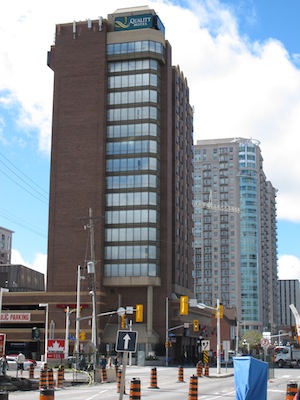
I stayed at the Quality Hotel, which is on downtown Ottawa's main drag, Rideau (ree-doh) street. It was fairly bare-bones in terms of amenities — but within easy walking distance of all the theaters, which was the whole point.
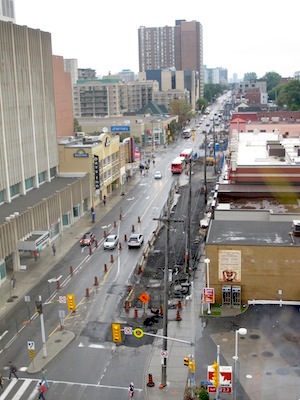
Up on the 9th floor, I could go out to the hallway and get a good view of the ByTowne Cinema just below. In the photo, you can also see that there was major construction going on all up and down Rideau street. I was told by other attendees that this project wasn't going on during their last visit... And that the whole area is pretty torn up compared to past years.
II. THE ARTS COURT
The main hub of the festival is the Arts Court, which houses the OIAF offices, the festival lounge area, and a small black box theater.
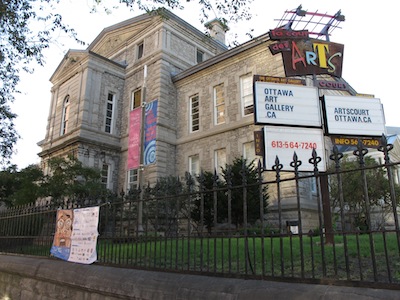
The Arts Court, as I understand it, was Ottawa's first courthouse. At some point it was decommissioned — and then later, the city renovated it and made it a space for arts organizations. It houses quite a few groups besides OIAF.
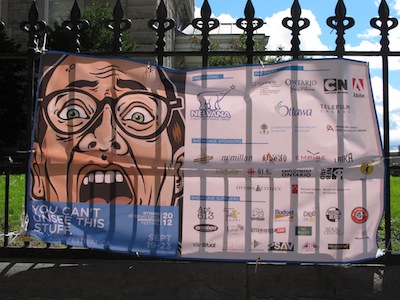
As I approached the Arts Court, I was interested to see a big OIAF banner. The artwork that OIAF used this year is pretty telling... A man whose face is contorted in shock/disgust, with the slogan "You can't unsee this stuff." It's true — despite being the oldest and largest animation festival in North America, Ottawa is known for its decidedly in-your-face attitude... And I did indeed see films that I. Can't. Unsee.
III. THE ARTS COURT STUDIO
The Arts Court Studio is up on the second floor...
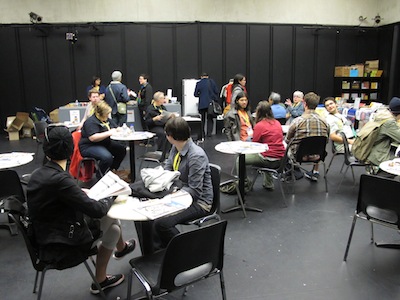
It's a big multi-purpose room that was set up with tables and chairs for lounging. A food bar dubbed "Chez Ani" was set up along one wall to serve chips, cookies, bottled water and small snacks.
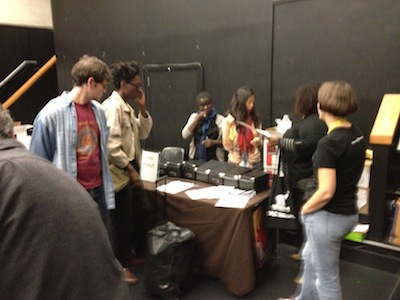
The Arts Court Studio is where you go to get registered for the festival and pick up your festival pass. I learned that OIAF has decided not to use a service like Ticketmaster; they've decided deal with registrations in-house. Shu Zhang, box office coordinator, told me about how she'd spent days upon days going through those boxes of festival passes making sure everything was alphabetized and in perfect order before the start of the event.
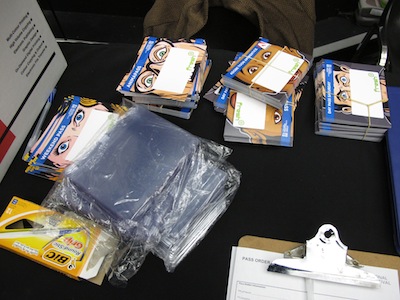
There were four festival pass designs, each specified for a different package deal. Bright yellow lanyards made it easy to pick out festival participants while traversing Ottawa's streets.
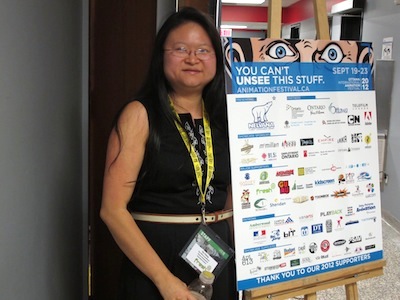
Immediately outside the Arts Court Studio was a sign listing all of the festival's major sponsors. Similar tripods were present at many (if not all) associated events.
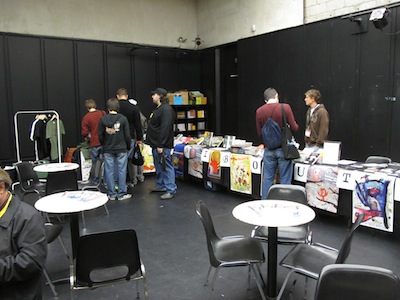
The festival's largest venue, the National Arts Centre, didn't open until Friday evening. Before then, the Studio also housed the "AniBoutique" — several tables piled with books (many of them written by Chris Robinson), DVDs, and posters and shirts from 2012 and several years prior.
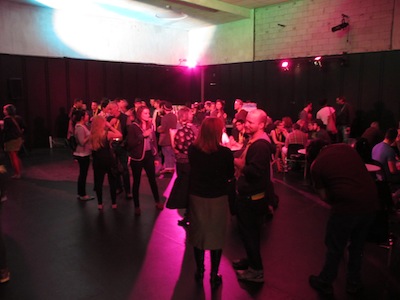
The Studio was mostly an area for low-key conversation. Sunday evening, though, a DJ came in and played music for a closing night dance.
IV. THE ARTS COURT THEATRE
The Arts Court Theatre is immediately adjacent to the Studio.
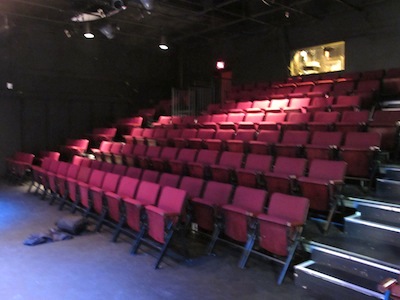
This was OIAF's smallest auditorium. I'd estimate it has about 120 seats.
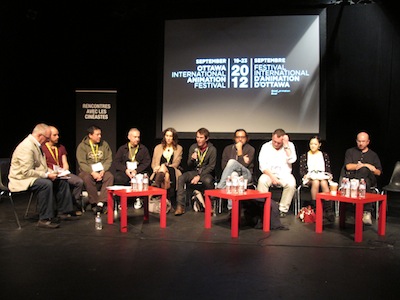
Each morning at 9am there'd be a "Meet the Filmmakers" breakfast. (A bit of a misnomer in my opinion — the snacks available in the Studio didn't seem particularly breakfasty.) A facilitator from the National Film Board of Canada would interview the animators whose films are in competition. Some were articulate — some were not. But with maybe a dozen people on stage, it wasn't too hard to keep the conversation moving.
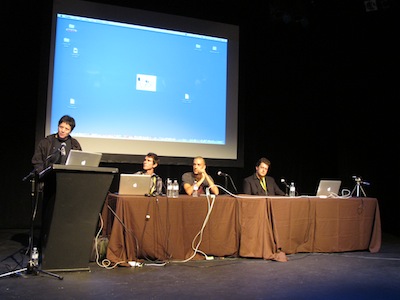
The Arts Court Theatre was where smaller panel discussions took place. I only attended one, titled "Whoa! What!? Experimental Influence in the Commercial Realm." Each of the speakers was clearly a very talented artist. However, it seems to me that when people are on a panel, there's very little incentive for any one individual to prepare remarks too carefully. Ideas feel watered down because no one takes responsibility for making a concise point. After that first experience, I prioritized attending other sorts of events.
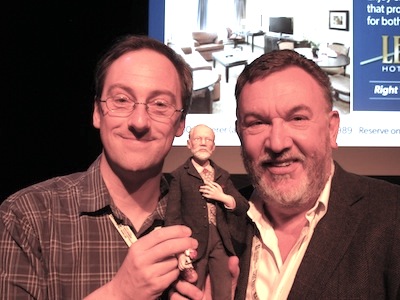
I was particularly excited to attend a Master Class taught by Barry Purves. During his presentation, he described his work on the film "Tchaikovsky: an elegy" (which I screened at the NW Animation Fest last May). He also poignantly described the great sadness that comes from looking back at a life of good work — knowing that if there had only been more time and funding, it could have been a life of truly great work. An empathetic audience felt Barry was being too hard on himself — but that frustration with knowing he could have done even better made complete sense to me.
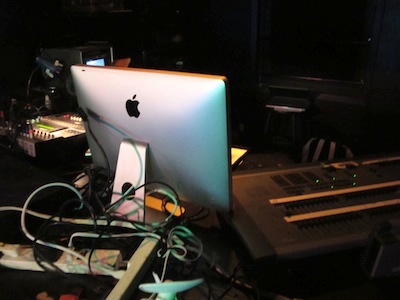
After one of the screenings in the Studio, I was able to talk to a projectionist. This was hugely valuable to me. With the exception of a few 35mm prints, it turns out that OIAF is playing all of their films from computers. These are Macintosh desktop machines — nothing terribly exotic. The software is Playback Pro. Generally speaking, playback during the festival was excellent... But in the Arts Court Theatre, I did notice that a horizontal line was sometimes visible in the picture. The projectionist revealed that the projector in this auditorium was an older, analog model — so we extrapolated that it was probably having a hard time keeping up with the data stream.
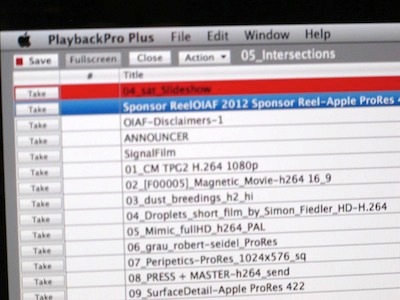
This is a very important lesson: The success of digital film exhibition requires that every component of the system be as robust and up-to-date as possible. It's not just celluloid and a reel-to-reel projector that you're dealing with — it's a digital file, a computer, software, cables, and a projector. If any one of these things isn't up to snuff, picture quality will suffer.
V. OIAF HEADQUARTERS
I arrived in Ottawa on a Tuesday; the festival began Wednesday night. Arriving early was a good move on my part. It allowed me to spend my first day in Ottawa just exploring the city, making sure I could get from one venue to the next quickly and without getting lost. I also made use of that first day to visit the OIAF offices.
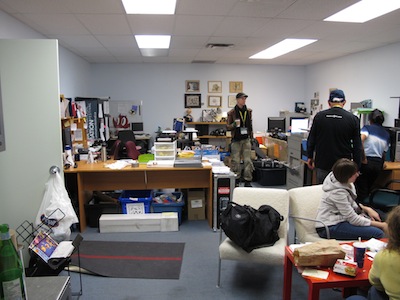
Th OIAF HQ is just a few small rooms, downstairs in the Arts Court building. While I was waiting to be helped, I overheard a interesting conversation there. A volunteer coordinator was instructing drivers on the importance of checking in before ending their shifts for the night. That's a safety precaution I wouldn't have thought of. Very smart!
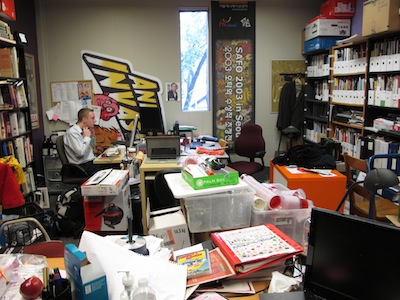
The main HQ room had a couch or two where people could sit comfortably for a meeting. The smaller office next door was more crowded and messy — housing all of the 2377 DVD submissions that came in for this past year's show.
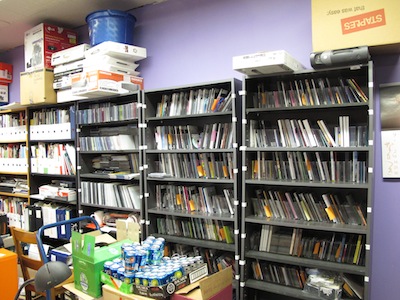
I am so glad I got to see this room... I've been dying to know what such a mass of DVDs looks like, and how it gets stored.
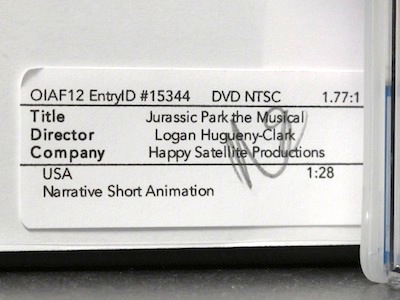
It was interesting to discover that OIAF prints out sticker labels to help with tracking all of the DVD submissions.
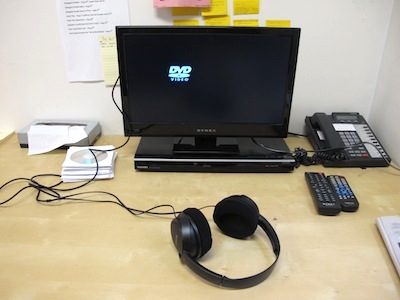
There's a small room adjoining the main office that's set aside for "viewing-on-demand" during the festival. There are three stations with DVD players attached to monitors. You can ask to see any submission you want.

Not knowing what to ask for, I just went with the flow and took a look at the first disc of films in competition. Even though films in the festival are being played as digital files, someone went through the trouble of creating about a dozen compilation DVDs, all with full menus. Why? How do they get used? And how long did it take to make them?
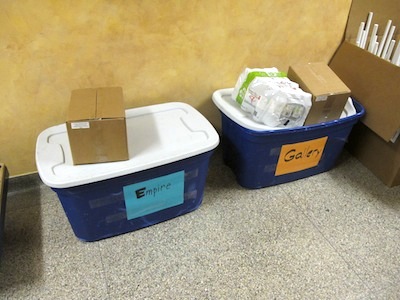
I noticed a few big plastic bins sitting in the hallway just outside the OIAF office. From the labels, it was clear that these are used for carrying papers, T-shirts, supplies and such from the office out to the theaters around town. Another good, practical idea.
VI. BYTOWNE CINEMA
The ByTowne Cinema was the site of OIAF's opening ceremonies — so it was the first venue where I actually got to see some films.
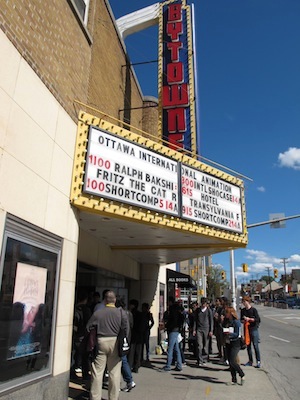
Signs at the ByTowne indicated that OIAF tickets were $7 for ByTowne members, $12 for regular entry, and $60 for a card that could get you in to see 6 films. There was also a sign indicating where passholders should line up for entry.
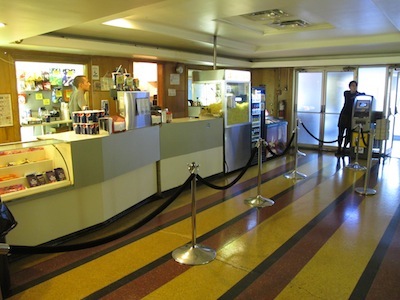
The concessions area formed a sort of airlock between the front doors and the doors to the auditorium. As attendees passed through, an OIAF volunteer kept count using a tally-clicker. It's difficult to track attendance when some people just have to wave their badge. This solves the problem elgantly.
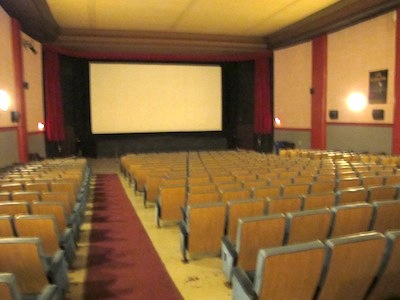
The ByTowne has a single large auditorium. It's similar in size and flavor to Portland's Cinema 21, so I'm guessing it has roughly 500-600 seats.
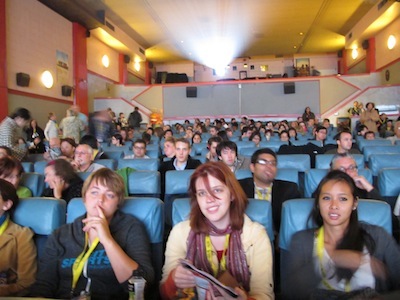
Prior to the start of the show, there was a pre-show reel. Mostly it contained stills from various shows in the festival — in effect, advertising the festival itself. There were also a few advertisements from sponsors. One of these was animated; appearing amongst still images, it was a rather jarring effect.
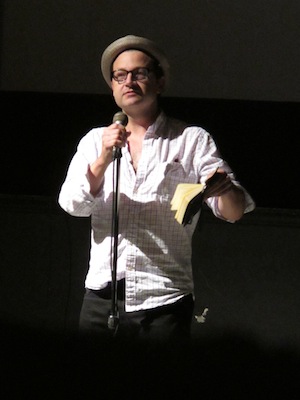
Chris Robinson took a very low-key approach to kicking off the festival. No pomp and circumstance, no statements of grand ideals. Very much one peer speaking to others. His choice of costume — a casual short sleeved shirt and jaunty hat — added to this impression.
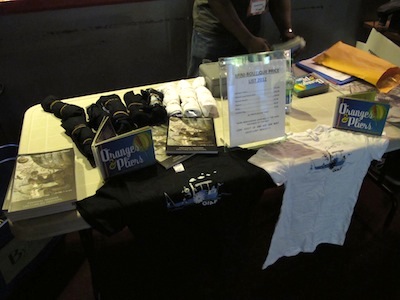
On the way out of the theatre, there was a merch table where you could purchase odds and ends. Tables like this were present at all of OIAF's venues.
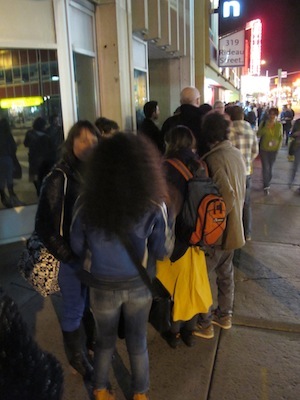
The auditorium gets cleared between shows. Given the length of the line to get back in for the next show, there's a strong incentive not to lollygag. If you don't get yourself out of the room quickly, you're going to find yourself halfway down the block.
VII. NATIONAL GALLERY
The National Gallery is large, beautiful art museum. I didn't have time to go see any of the exhibits — but I did see several films in its big, modern auditorium.
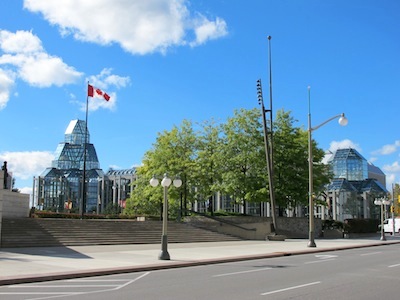
The National Gallery is maybe a 10-minute walk from the Arts Court, or 15 minutes from the ByTowne. I'd be a little winded from speed-walking to get from one place to the other — but I never had any trouble getting into a show and finding a decent seat.
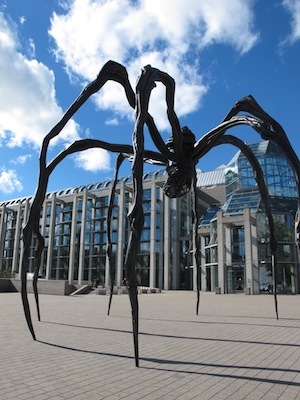
There's a remarkable sculpture of a giant spider just outside the National Gallery titled "Maman." A nearby plaque says this about it: "Maman, the giant egg-carrying spider, is a nurturing and protective symbol of fertility and motherhood, shelter and the home. With its monumental and terrifying scale, however, Maman also betrays this maternal trust to incite a mixture of fear and curiosity." It seems to me a very daring piece, which in itself says something about the cultural life of Ottawa as a city.
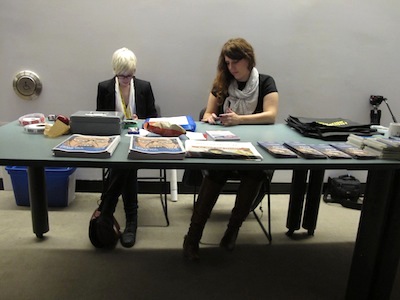
The OIAF's "Festival Reader" includes names and photos of event staff. Using it as a reference, I could tell that the blonde woman at the merch table was Technical Coordinator Keltie Duncan. I would like to have had a chance to query her about details of running the festival, but the opportunity never seemed right.
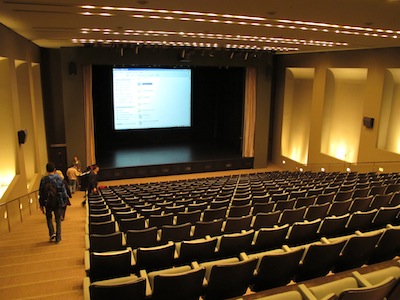
The National Gallery's auditorium is huge, and has a fairly steep rake. The upholstery of the seats and the carpeting all seem quite new. I'm guessing there may be 1000 seat in the room.
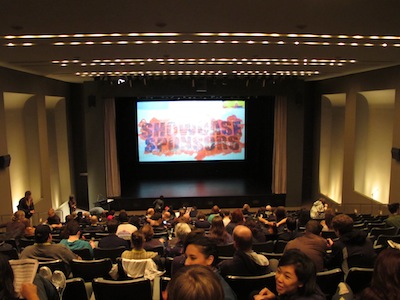
The same pre-show reel screens at every venue. When the show starts up, there's a clip that lasts maybe 60 seconds acknowledging the festival's sponsors. I was surprised by how quickly the names appear and disappear — no more than 2 seconds given to each. I suppose that when the clip is repeated so many times throughout the week, no one's going to complain too much about brevity. Plus, with so many sponsors to mention, you really do have to rush — or else people will quickly get antsy for the show to start.
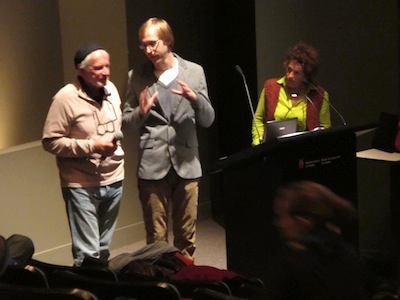
The first show I saw at the National Gallery was "The Making of Le Tableau," in which the director of this feature film showed concept art and clips from its development. Director Jean-Francois Laguionie is French and needed some assistance from a translator. During the course of the week, it became very apparent that there is a wide range of skill levels amongst translators. One or two switched between languages with fluency — but I'd say the majority struggled from time to time, trying to find the right words. (One poor soul was truly flummoxed by the task, which raised audible audience ire.)
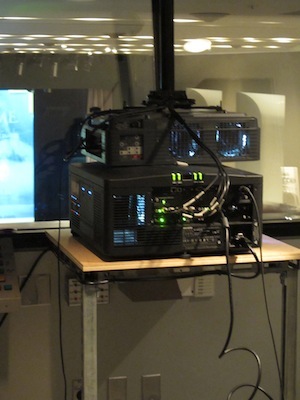
Again I poked my head into the projection booth. Christie is a very high profile brand of digital projector. The National Gallery's projectionist told me that the company provided several projectors this year. They gave essentially flawless performance, so far as I could tell.
VIII. EMPIRE RIDEAU
The Empire Rideau theatre is housed within the Rideau Centre, a large maze-like shopping mall in the heart of downtown Ottawa. Being a typical cineplex, it's easily the least interesting of the festival's venues.
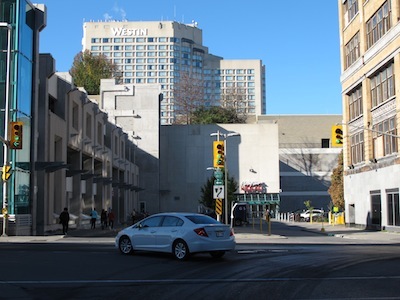
The Rideau Center seems to take up several city blocks. Finding the movie theater inside there took a little doing the first time.
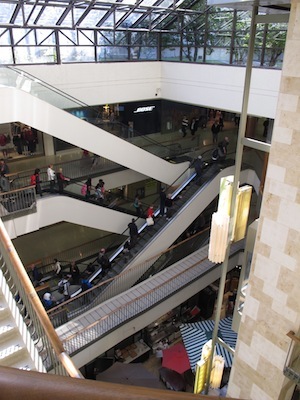
Did I mention that this mall is also four stories tall?
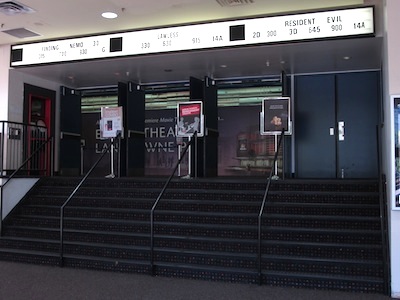
The Empire Rideau has several auditoriums — but OIAF was only using one of them. Some patrons were showing up to see Hollywood fare, completely unrelated to the fest.
(I have to say, it felt a little odd to be watching indie films in such a mainstream venue.)
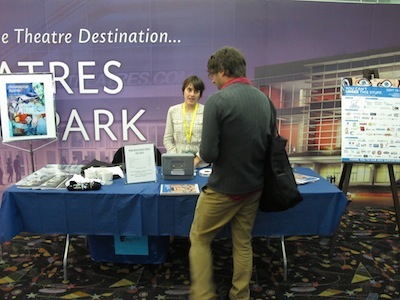
Again, there was an OIAF table up front.
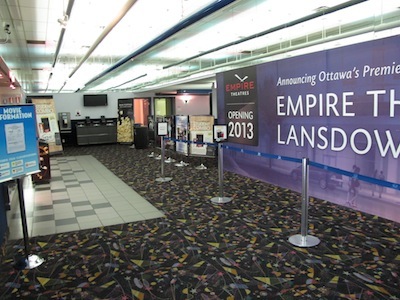
I'd estimate that this auditorium has about 250-300 seats.
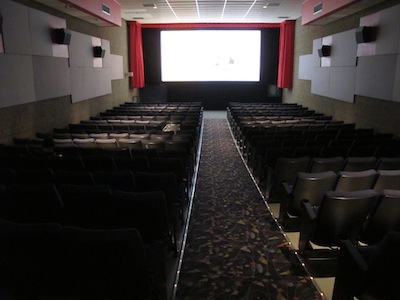
I noticed that the edges of the image in the pre-show reel were cut off. I think I recall hearing that only 3 out of 5 venues were using Christie projectors... If that memory is accurate, perhaps this auditorium was using a pre-existing projector arrangement?
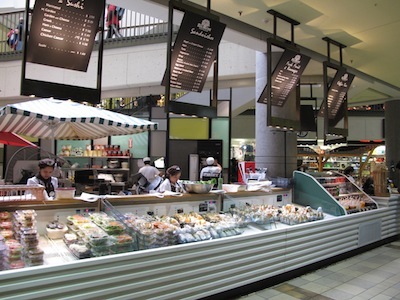
One excellent discovery I made at the mall: pre-made sandwiches. There was a sort of grab-and-go deli on the ground floor selling various flavors of sandwiches in plastic wrap. When you're running across town, trying to get to the next show on time, having a few of these in your shoulder bag can be a real life-saver!
IX. NATIONAL ARTS CENTRE
The National Arts Centre is the grandest of OIAF's venues. I hear that the building was closed for renovations for a few years, and that OIAF is just now getting back into the space. It has smaller auditorium and a larger auditorium. The big one is where the closing "Best of the Festival" show took place.
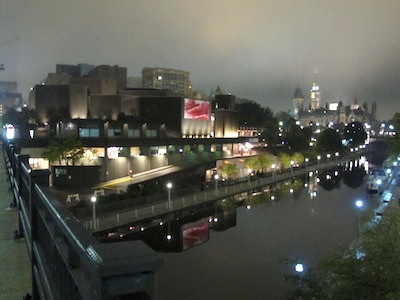
Situated on the edge of a canal, the National Arts Centre building is a gorgeous sight.
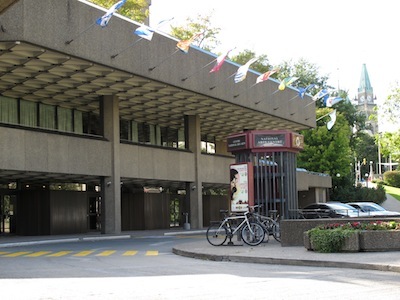
To get to NAC's entrance, you go down a story from where you were when crossing the nearby bridge. Despite being in the middle of downtown, the entrance feels tucked away.
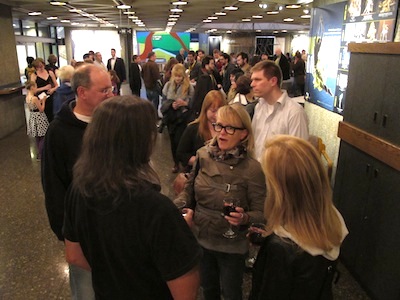
The lobby is long and has low ceilings. When people would queue up for a big event in the main theatre, the line would snake far down this passage and loop back around.
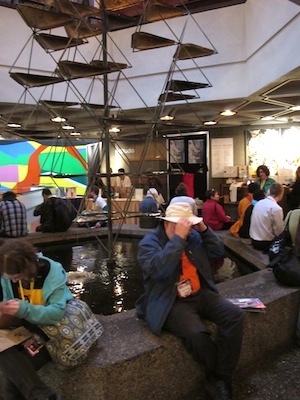
At one end of this lobby space is a sculpture and water feature. The "AniMarket" clusters around this area. From what I'd read, I expected the AniMarket to have dozens of vendors — like one might see at a comics convention. Instead, there was a motley gathering of perhaps eight tables: a few animation schools, Wacom tablets, Disney reviewing artist portfolios, an animation software company...
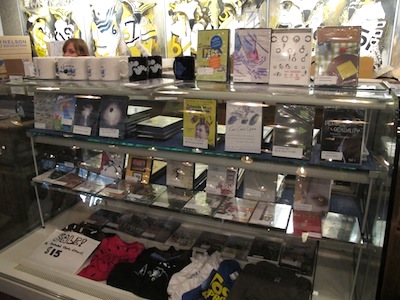
With the AniMarket opening Friday night, OIAF's own Aniboutique switched spaces. It seemed like there were a lot more items over at the Arts Court Studio; here, OIAF staff somehow managed to fit all the DVDs into a single glass case, and the books onto one table. I think the DVDs for sale were primarily items carried by Animation World Network — I didn't notice individual animators bringing in DVDs, trying to sell their own films.
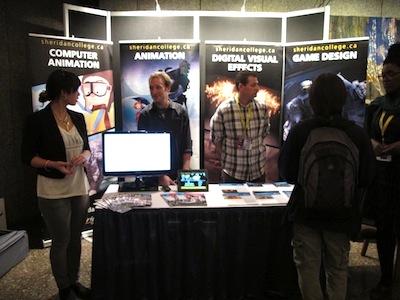
It's increasingly clear to me that there are just a handful of animation schools with an international reputation. Supinfocom (France), National Film and Television School (UK), and Tokyo University of the Arts (Japan) were all featured in a special "School Competition" block of films... But they didn't send recruiters. I spoke to a representative from Vancouver; she says that the students there are putting out top-notch work, but word hasn't reached festivals yet. I'm interested to find out more.
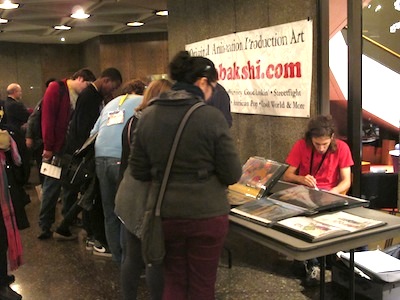
Ralph Bakshi (of "Fritz the Cat" fame) was a featured speaker at the fest. He had a table in the lobby/AniMarket area where his son was helping to sell cels and other original artwork. This table seemed most akin to comic con culture.
X. NAC STUDIO
The Studio was NAC's "small" auditorium — I'd still guess that it had 350+ seats.
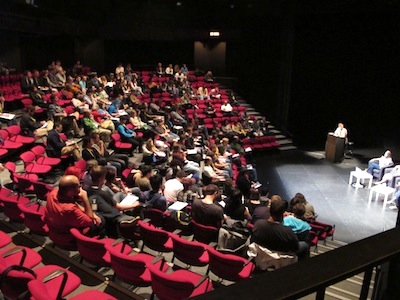
Programming for this space focused on panels and presentations having to do with career development. Due to scheduling conflicts, I was only able to sit in on two partial workshops. Once again, I felt that panelists are prone to making off-the-cuff pronouncements... And then the one speaker who I saw doing a solo presentation seemed to rely perhaps too heavily on video clips.
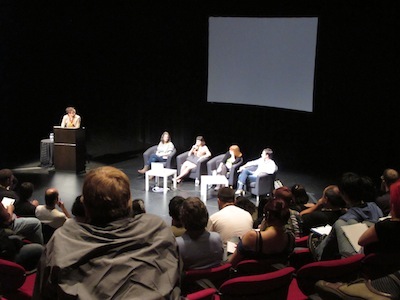
Maybe I'm being unfair. Perhaps the intellectual in me is hoping to hear academic papers? Or perhaps the opposite: practical hands-on how-to workshops? I'm not sure what I really think yet, except that I walked away with a vague sense of dissatisfaction.
XI. NAC THEATRE
The National Arts Center Theatre is big — but not as huge as I thought it might be. It's a little bigger than the Newmark Theatre at the Portland Center for the Performing Arts — but a little smaller than the Arlene Schnitzer concert hall.
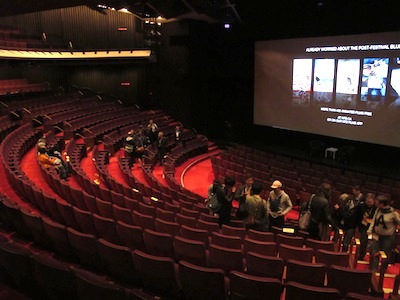
Some of the competition screenings were identified as "galas." I gather that these were the ones where filmmakers would be in attendance. I prioritized gala screenings, so I'm not entirely certain how much the non-gala competitions differed.
At my first gala, I was surprised by how the show comes to a stop between films, a live announcer reading off the title and director for each film over loudspeakers. If the director was available, the lights would come up briefly after the film ended, the artist standing up from where they were seated to receive applause.
Having a live announcer really helped distinguish the experience from simply going to a typical movie at the cineplex. It may have also played a practical role. OIAF continues to screen some 35mm prints; having a pause in the program probably helps smooth the transition between films. (I expect this was even more important in the past, when celluloid was the norm.)
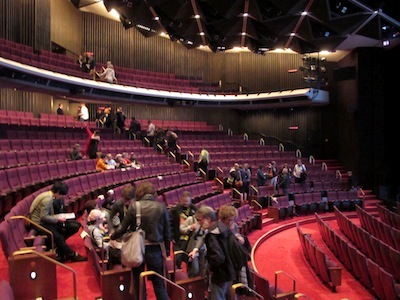
I said that the Christie projectors' performance was flawless... But there was one tiny technical issue that occurred during a screening at the NAC Theatre. When the screen was dark, a few little white points would appear randomly. My own guess is that the problem had to do with interference in the cables somewhere — but there's no way to know.
Hisko Hulsing, both a juror and director of "The Junkyard", commented publicly that the colors of his film had been washed out — that we hadn't seen a true reproduction of the work. I seriously wonder, though, if there's an unfair comparison being made between what can be accomplished on an LCD computer screen vs. throwing light across a room onto a giant screen.
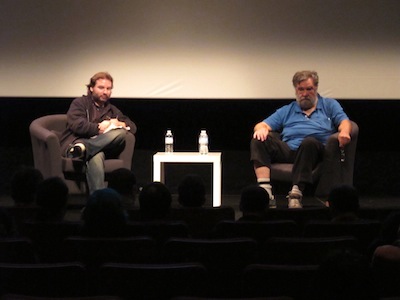
I asked Chris Robinson what he considered must-see at this year's fest. He recommended the "One-on-One with Ralph Bakshi" interview, saying that sparks might fly — so I gave this featured event a whirl.
I respect Ralph Bakshi's contributions to animation; I'm neither a serious fan nor a detractor. Several of Bakshi's feature films were screened during the week — but on principle, I skipped any screening that I could either see in a mainstream theatre (e.g. Hotel Transylvania) or rent at home (Fritz the Cat). So Bakshi's work was not especially fresh in my mind during the interview. I got the impression that this is someone who has spent a lifetime being scrappy and managing to make passable art without waiting for big budgets to fall in his lap... Someone who feels they're making important social commentary about class disparities in the USA. Perhaps this interview was an apt centerpiece for the festival; but because I didn't prioritize Bakshi's films, much of the meaning was probably lost on me.
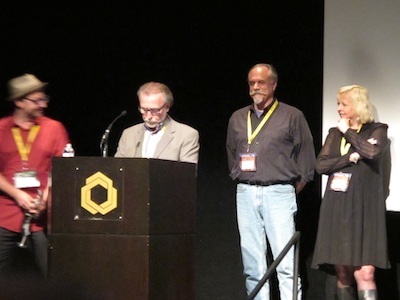
One thing I'll say for the NAC Theatre: it really added a sense of grandeur to the final "Best of the Festival program." Environment matters!
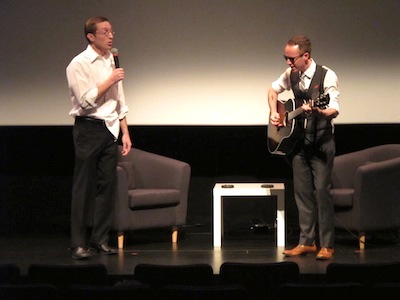
Yet, this awards show was a curious animal. With many awards to hand out, there was a bit of a rush to keep the program moving. It was unrehearsed, so the jurors seemed a little uncertain at times about which one of them should be at the microphone to speak — or for that matter, what needed saying. As emcees, Joel Frenzer and Alan Foreman (who host an animation podcast) did some light comedy between segments. Having met them, I think they're both very nice people... Yet, there's something about these segments that didn't seem to quite fit. I'm having trouble putting my finger on exactly why. Clearly every film award ceremony follows in the shadow of the Oscars... Perhaps I'm just picking up on the dissonance between animators pantomiming glamor and the reality of just how socially awkward most of us are.
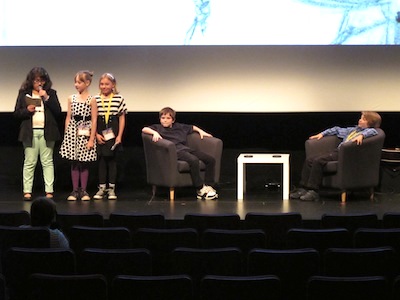
Films for kids were judged by kids. Neat idea. Unfortunately, a horrifying gender dynamic played out. Upon reaching the stage, the young boys immediately made a grab for the two cushy interview chairs, and put on appalling airs of superiority towards the girls. I have some interest in trying a youth jury in Portland — but the way the boys reacted to being in the spotlight now sounds a note of caution in my mind.
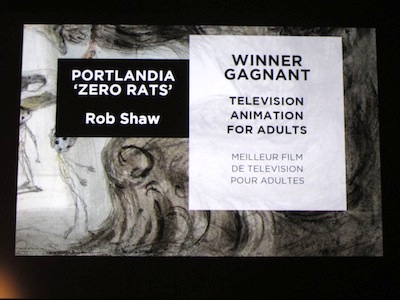
I don't recall any film clips being shown during the awards ceremony — but there were slides that displayed the names of the winners. When I was planning out my schedule for the week, I wondered why there weren't any re-screenings of the competition programs on Sunday. Now I realize that all the competitions had to be juried by the end of Saturday in order to leave time for preparing Sunday's show. I hate to imagine being the person who had to put all the slides together the night before!
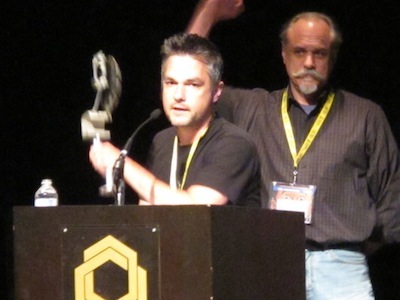
It was a proud moment to see Portland's own Rob Shaw accept an award for his "Portlandia 'Zero Rats'" segment. Rob hired me for my first professional animation gig at Bent Image Lab some years ago. He does very clever work, and I'm glad to see him receive recognition.
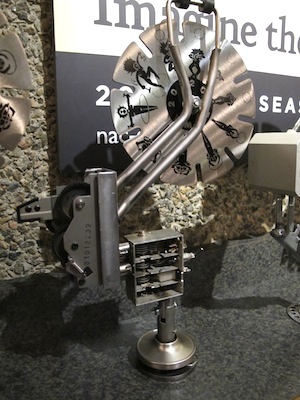
Each of the OIAF awards is a unique sculpture created by a local artisan. I have mixed feelings about this. On the one hand, the creativity inherent in making unique awards is laudable. On the other hand, when the awards all have a single design, I think it helps an animator feel like they are joining a long line of winners, joining a heritage. Formality enhances tradition, whereas the whimsy of one-of-a-kind awards undermines that sense of venerable membership.
XII. OIAF PICNIC
Now that I've covered all five screening auditoriums, I'd like to review some peripheral locations... Beginning with OIAF's famous Animator's Picnic.
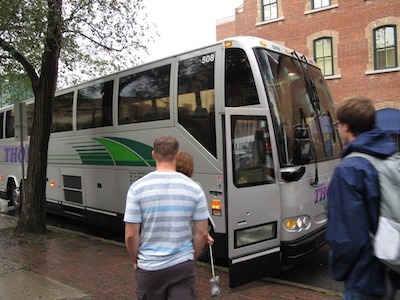
Free busses cycled back and forth between the Arts Court and the picnic area.
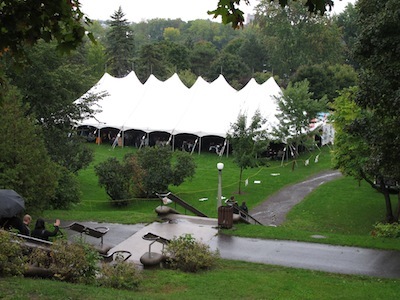
The picnic tent, set up in a nearby park, was huge. It was a sort that I've seen used by colleges at outdoors graduation ceremonies.
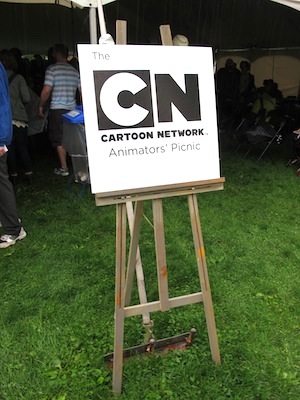
Cartoon Network sponsored this event. As usual, there was a sponsorship sign on a tripod at the entrance.
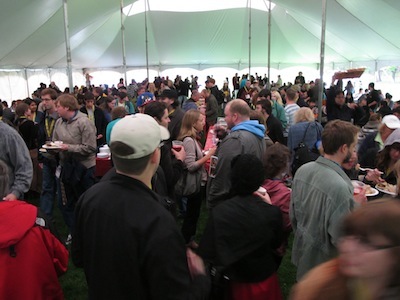
The combination of rain outside and free lunch inside made for a very crowded tent.
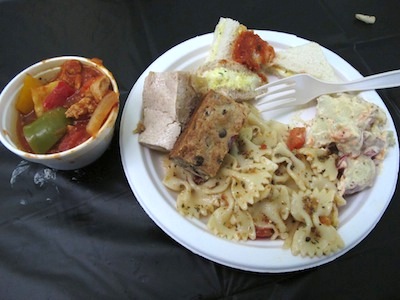
The buffet tables were arranged in a long line down the middle of the tent. There were vegetarian options — but they weren't clearly labeled, so I was left to guess. Ample garbage and recycling bins were provided.
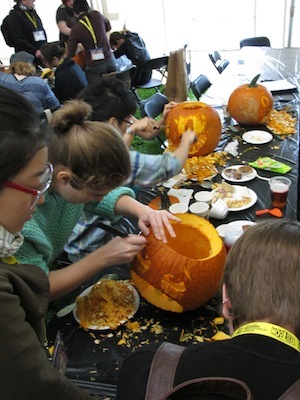
The highlight of the picnic is the pumpkin carving contest. It was mostly college students doing the carving — I'm not sure I saw anyone else make a submission. I can't be sure, but I think most of the participants were part of a group that bussed up from the Rhode Island School of Design.
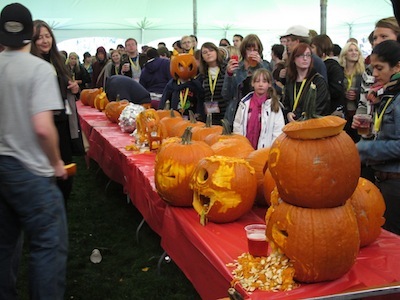
The buffet was cleared and pumpkins were arranged for judging. I'm including photos of several below. With regret, I don't recall which one was the winner.
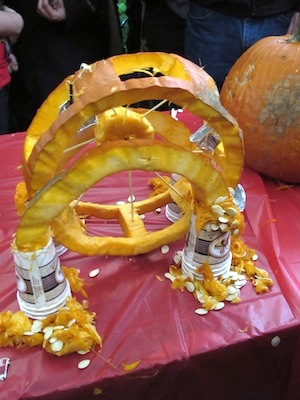
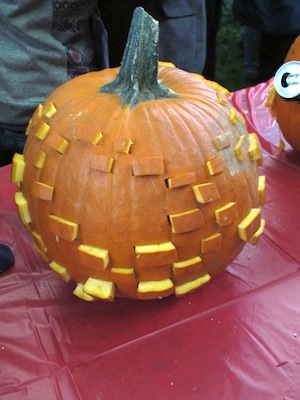
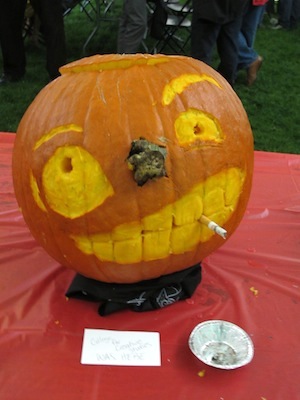
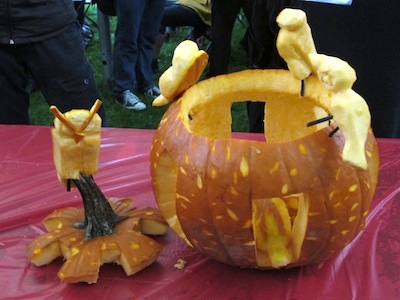
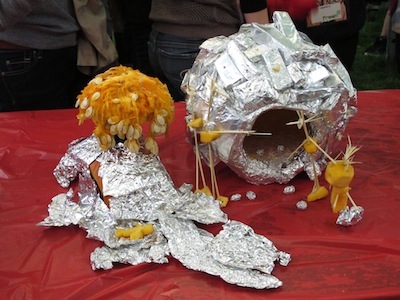
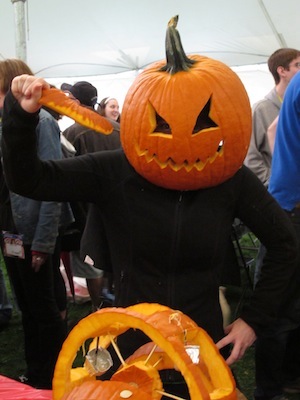
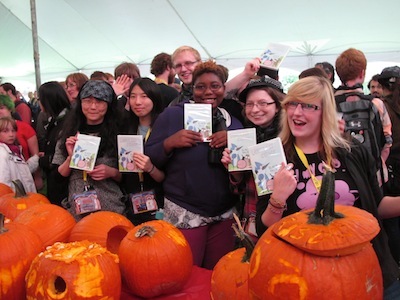
Brooke Keesling from Cartoon Network gave out DVDs as prizes to the contest winners.
XIII. HARD ROCK CAFE
The Opening Night Party was held at the Hard Rock Cafe.
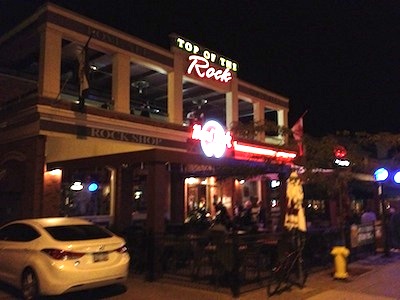
Passholders received coupons for free drinks, which were slipped into our festival badges at registration. Limitations were set on which types of alcohol you could order — just the basics. Still, free drinks are a great way to get the party moving.
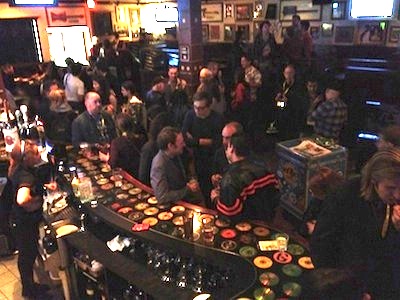
I bumped into Shu Zhang again, and she introduced me to a few people — taking an active role in helping folks mix. (Thanks Shu!)
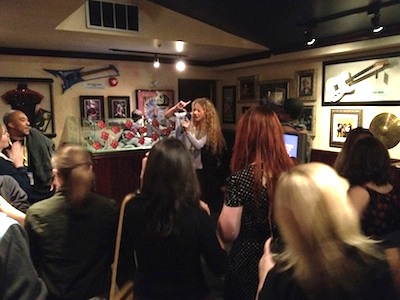
The RISD students were really getting into karaoke upstairs. One woman sang an energetic a version of the "I like big butts" song that blew the crowd away.

And then there was this guy. Jumping around with your shirt over your head is a thing now? The segments of the portable stage began to come apart, and the karaoke TV monitor wobbled dangerously. Our moderator, a drag queen in a purple rubber wig, had to gently bring this behavior to a halt.
XIV. RITUAL NIGHTCLUB
Reviewing the schedule, I realize there was an alcoholic opportunity at the close of every night during the festival.
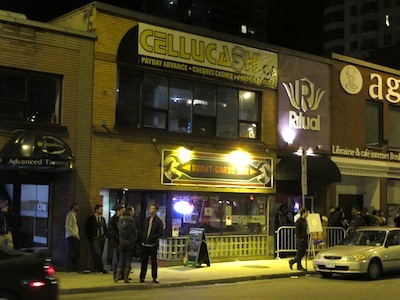
Hard Rock cafe had karaoke, a bar, and booths where you could get some food. In contrast, Ritual Nightclub was much more of a dance club.
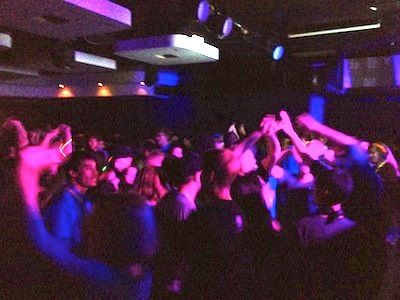
The dance floor was quite crowded. I made the mistake of setting my coat down for a while. When I came back, someone had stolen my business card holder. Most likely they thought they were getting my wallet — so I got off lucky. I saw a young woman in tears, talking to the fest organizers, who may have had a more significant loss. (If I ever try to host something like this, I'm going to need to think seriously about what security should look like.)
XV. SALON DE REFUSES AT CLUB SAW
Club Saw is physically connected to the Arts Court — though I don't know of any indoors passageway between the two buildings.
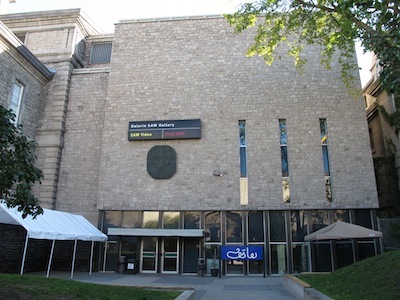
This was the site for "Salon de refuses" — a screening of some of the better films that didn't get into the fest. How were they chosen and who compiled them? I wish I knew — it's a rich concept. All I do know is that Laika sponsored the event.
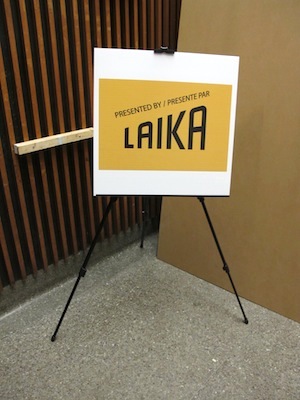
From what I gather, "Salon de refuses" has been going on for at least a few years. Chris Robinson introduced the event, and commented that it was his first time attending... Kind of a strange experience for him, being the the very person who does the refusing.
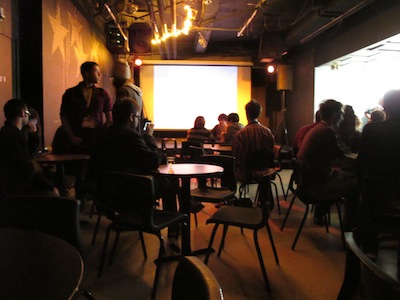
There was tiny moment of drama. Chris mentioned some topical political absurdity going on in the USA (remember, this was during the lead up to the elections)... On this cue, a group of students in the back of the room — the same ones who had sat behind me, talking through the films of the last screening — started bleating "You Ess Ae! You Ess Ae!"
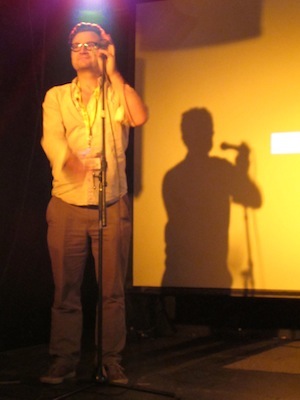
I despise jingoism. Quite out of character, acting on an unsuspected instinct... I flipped them off from the front of the room. Which took Chris quite off guard and made him crack up, so he couldn't finish his introductions. He came down from the stage to chat with me, still laughing. Nice moment of conection. Unorthodox international diplomacy — but hey, if it works...
XVI. EPHEMERA
To wrap up, I wanted to document some ephemera associated with the fest.
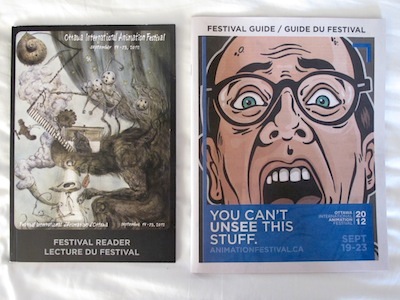
Ottawa produces a "Festival Guide" and a "Festival Reader." Both contain the schedule and event descriptions. The Guide is newsprint — which is presumably inexpensive, being left out as a freebie at various venues. (I'm curious to know how many copies were printed, and where all they were distributed.) The Reader is glossy and has a spine like a paperback book. It comes along with a festival pass. Purchased on its own, it's $20. Unlike the Guide, the Reader feels like a keepsake. It also contains contact information for every filmmaker in the festival — which is a very valuable resource to a another fest director, such as myself.
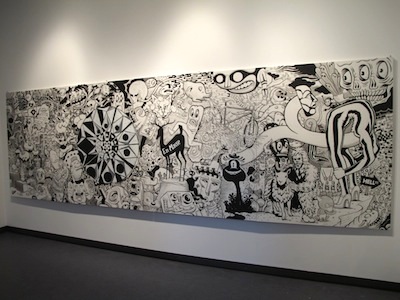
In addition to the pre-show ads and the animated sponsors clip, there was also a "signal film" that acts as a sort of "station identification" for the festival. This year's signal film evolved from a group painting created by the groups En Masse and See Creature.
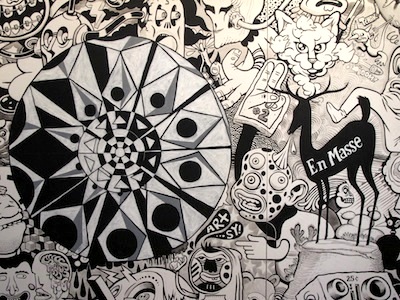
The original painting hung in a small gallery space in the Arts Court.
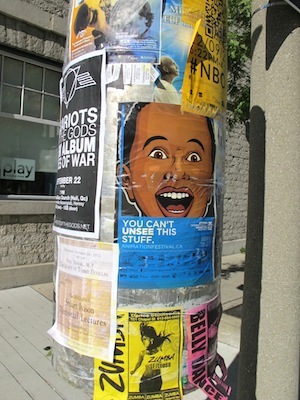
There were four different posters for the festival. I saw a few around town on lamp poles and in shop windows. Nice bright colors really make a difference.
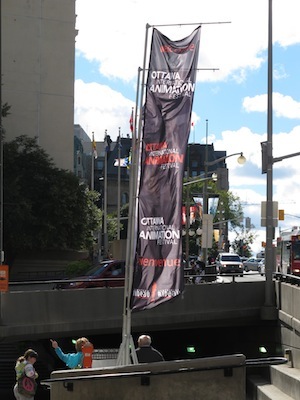
I also saw some OIAF flags in one or two spots around town. I'm not sure whose property they were on, or what the arrangement is that allowed this display. It seems similar to how Portland sometimes hangs banners on its lightpoles for marathons and the like. (I have no idea how those permissions work, either.)
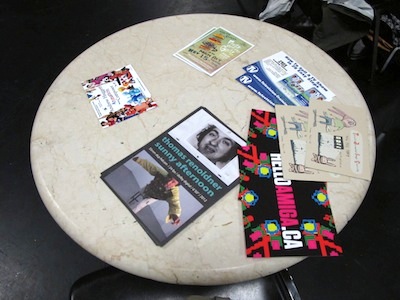
OIAF organizers weren't the only ones creating ephemera. Filmmakers, schools and vendors also brought flyers along to scatter across flat surfaces.
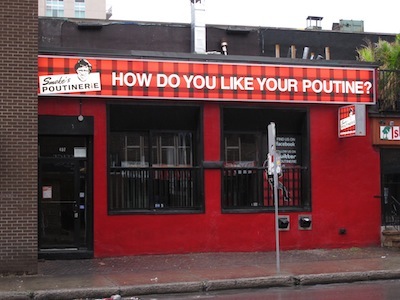
A form of ephemera that has almost nothing to do with OIAF... Poutine! I definitely wanted to try some of this Canadian favorite while in Ottawa. I'm glad I did so on my first day there, while there was some free time to explore. It couldn't have happened at any other time. I overheard some people talking about going to restaurants for meals. There were no meal breaks in the schedule — I can't imagine how you could go eat somewhere special without missing big chunks of the fest.

The trip to Ottawa served the function I'd hoped for. I feel like I've returned home with a much broader literacy about animation festivals in general. I'm charged up with ideas for how do better event organizing — with a particular interest in expanding and continuing to develop the Northwest Animation Festival.
Thanks again goes to the Regional Arts & Culture Council for its marvelous support!

posted by sven | permalink | categories: exhibits & events